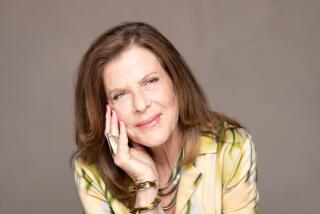A project to polish the Berlin ‘brand’
- Share via
IT started more than a century ago, as Quaker Oats and Campbell Soup became names to rely on. Museums and the art world picked up on it, and now the notion of “branding” seems to have reached all the way to
At least, that’s the goal revealed recently by the Art Center College of Design and the Goethe-Institut Los Angeles. Their plan, according to two members of Art Center’s faculty, is to “re-brand” the hip, chilly German capital as a cosmopolitan cultural and financial center.
“Berlin has been struggling with its identity ever since the wall came down,” says Nik Hafermaas, a former Berliner and chair of the school’s graphic design department. Early ‘90s euphoria, he says, was followed by a dreary hangover and difficulties tying together the western half of the city and the poorer eastern one.
Luckily, says David Mocarski, chair of Art Center’s environmental design department, the city is experiencing a comeback: “It’s now an old city with a young population, with a youthful, entrepreneurial mentality and a lot of art and design.”
But, says Hafermaas, “in Berlin, unlike Hollywood, people don’t boast about themselves.”
Enter Art Center. The program will send students and faculty to Berlin for 14 weeks starting in September, with the goal of creating a traveling exhibition to redefine the city. The thinking is that outsiders can see the city better with fresh eyes.
Mocarski says he wants to leave the project as open as possible. “We want it to have an immediate and visual impact similar to Bruce Mau’s ‘Massive Change’ exhibition” -- a gargantuan multimedia piece subtitled “The Future of Global Design.” The exhibition will open in Berlin and travel to L.A. and Goethe-Instituts across America.
Certainly, Berlin has acquired a cachet among young writers, artists and musicians, partly because of its low cost of living. But Hafermaas and Mocarski say the city needs more than bohemians and slackers: They hope to turn the city into a “start-up culture.”
Makes you wonder: When it comes to “re-branding,” how hard is it to take Berlin away from its world-famous role as capital of the Third Reich? Does the whole Nazi thing leave a bad taste in the mouth?
“I think we’re way past that,” says Hafermaas. “When you talk to a younger generation starting their professional life now, they don’t even remember the wall. And the World Cup just took place in Berlin, proof of a very different mind-set. For the first time, people were wearing their national colors with pride.”
-- Scott Timberg
More to Read
The biggest entertainment stories
Get our big stories about Hollywood, film, television, music, arts, culture and more right in your inbox as soon as they publish.
You may occasionally receive promotional content from the Los Angeles Times.










